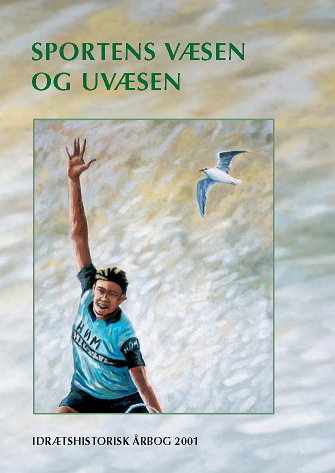Dansk idræt under hagekorsets tegn
DOI:
https://doi.org/10.7146/ffi.v17i0.31735Resumé
Artiklen belyser idrættens rolle og betydning under anden verdenskrig med fokus på bl.a. Danmarks Idræts-Forbunds relation til besættelsesmagten.
Danish Sport under the sign of the swastika
On 9th April 1940 Denmark was invaded and occupied. This article deals with the response of the Danish Sports community to the German Occupation. Immediately after the German invasion the urban sports movement proved reasonably staunch in asserting the traditional apolitical status of sport in the face of German pressure. However, the wish to maintain the range and quality of Danish sport gradually became crucial to a resumption of sporting relations with Germany, which gave the occupying power considerable propaganda advantages through Danish-German international sporting events. Several rural gymnastics associations were active in the initial phases of reactionary attemps by the the world-famous Danish gymnastics leader Niels Bukh’s to create a Danish Youth League. However, there was opposition to fraternizing on football fields and other sports locations. The Danish response to fascist militarism was complex – compromise and confrontation worked side by side.
Downloads
Publiceret
Citation/Eksport
Nummer
Sektion
Licens
Forfattere, der publicerer deres værker via dette tidsskrift, accepterer følgende vilkår:
- Forfattere bevarer deres ophavsret og giver tidsskriftet ret til første publicering, samtidigt med at værket er omfattet af en Creative Commons Attribution-licens, der giver andre ret til at dele værket med en anerkendelse af værkets forfatter og første publicering i nærværende tidsskrift.
- Forfattere kan indgå flere separate kontraktlige aftaler om ikke-eksklusiv distribution af tidsskriftets publicerede version af værket (f.eks. sende det til et institutionslager eller udgive det i en bog), med en anerkendelse af værkets første publicering i nærværende tidsskrift.
- Forfattere har ret til og opfordres til at publicere deres værker online (f.eks. i institutionslagre eller på deres websted) forud for og under manuskriptprocessen, da dette kan føre til produktive udvekslinger, samt tidligere og større citater fra publicerede værker (se The Effect of Open Access).





